Review: Windstorm - Ari’s Arrival – An Open World Horse Adventure that Outshines its Predecessor in Every Way
Disclaimer: As of November 2021, I am an employee of Aesir Interactive. The article below was written before that and remains unedited.
Windstorm - Ari’s Arrival, created by German studio Aesir Interactive, was released along with the movie of the same name in March 2019. I’ve been meaning to review it basically ever since – promising articles and then taking a year or two to write them is a bit of theme on this site. But after being severely disappointed by its predecessor, seeing that the game only had “mixed” reviews on Steam and noticing a lack of interest in the community whenever I held votes for what to cover next, this review got pushed back multiple times on the priorities list.
In a way, this may have worked in the game’s favor: since its initial release, there have been two patches that made drastic improvements. And at the same time I have to admit that we’ve all been sleeping on this one, because it really gets a whole bunch of things right, and deserves vastly more attention from horse-loving players than it has been getting.
If you have not read it yet, I strongly recommend a look at my interview with Aesir’s CEO Wolfgang Emmer, where he shares a lot of valuable insight into this game’s development, and why the version that was launched in early 2019 differs so significantly to the version I’m reviewing today.
Let’s see what it has to offer.
One note before we start: Although I make some comparisons between the two games in this article, I strongly recommend not playing the first one and jumping right into this one instead, if you have an interest in this franchise. The first one does nothing at all to introduce relevant characters in any case, making Ari’s Arrival a vastly better entry point.
Ari Arrives
Like the movie it’s based on, Ari’s Arrival replaces previous main character Mika with troubled child Ari, who comes to Kaltenbach Ranch after her latest violent outburst cost her a foster family. She soon meets the stallion Windstorm, who is having issues because Mika – magical horse girl extraordinaire and the only person who could ride him – is in a coma.
Since I didn’t watch the movie nor the two other films that lay between beyond trailers and rough plot summaries, I’m obviously lacking some context here. The game does a decent job of introducing all the characters you need to know though, and you soon realize that Ari and Windstorm are just about perfect for each other and can help each other get better. After the first few linear missions, you thus land out in the wild with the horse by your side and a wide open world at your feet and hooves.
Unlike the first game where missions had very low narrative stakes, your main mission tasks in Ari’s Arrival eventually revolve around saving the Kaltenbach Ranch from the influence of its new manager Isabell, whose ambitions prioritize fame and money over the wellbeing of animals and people.
The story still follows a few well established horse girl tropes, but mostly manages to skirt around being too cliché. It is told through 2D character art, text boxes and voice acting, with very few animated cutscenes. In some parts of the story, the budget constraints are obvious when action is told through text rather than showing it, but it does feel like the team did well within said constraints.
The narrative tackles aspects of finding home and family, with some missions and dialogue delving into the mythical to hint at why exactly the energies of Mika, Ari and Windstorm are linked. Impulsive tomboy Ari is likeable enough as a main character, with her deadpan skepticism and destructive tendencies making for a nice change of pace. Dialogue and voice acting are solid, with the English translation being of noticeably higher quality than that of its predecessor.
Much of the action is told through dialogue boxes with character animations being very rare.
Ari’s character model is by far the most detailed, NPC models are very simple by comparison.
The Horse and His Animations
In the first Windstorm game, the animation quality was somewhere between weird and awful. The horse animations in Ari’s Arrival are a vast improvement. They are far from perfect, and some motions still have oddities about them, but the step up from “horrifying to look at” to “fine” is significant.
As before, Windstorm has four gaits called Walk, Trot, Gallop and Sprint instead of using the word ‘Canter’ anywhere because this is a German game and equestrian language differences are a bit tricky. The footfalls and movements are correct, and the overall shape and motion of the horse are decent.
Judging the quality of animations is difficult due to camera behavior that does simply not let you properly look at your horse, making it impossible to get a proper look at each of the movements from the side. I consider this a flaw not only because I want to do a close inspection for review purposes but also because… I actually kind of like looking at horses. Huge surprise, I know.
Many of us who play horse games want to look at horses and their movements, so when a game does not me get a proper view of said horse’s motion, I feel cheated. It also always feels a bit like the game knows that its horse animations are not great so it tries to hide that fact from the player, which I find frustrating.
When you start at a walk and don’t accelerate to a trot, you just stop again after a few steps.
I appreciate that you can trot at different speeds. But let me see the whole legs, dangit.
Should the legs reach forward a little more in the canter for it to fit this movement speed?
The gallop/sprint uses a some excessive motion blur that further obfuscates the actual animation.
Even so, we can see a handful of issues: Winstorm’s rig is not quite ideal, with his forearms being a bit overlong and his knees sticking out weirdly in the front in many of his animations. The shape and set of head and neck looks off to me more often than not. His lying down and getting up animation at campfire savepoints is something I greatly appreciate in principle, but it also looks decidedly wonky where his legs are concerned. Turning behavior is a bit stiff, and maneuvering in limited space is very tedious because Windstorm can’t turn in place. I found myself longing for a ‘turn on the forehand’ feature.
A nice detail: Windstorm’s head follows you when you walk around him.
The model and rig around his knees are just weird.
Another weird choice is that you cannot actually move at a walk. The walk exists as an animation and as a gait in the UI, but mechanically is only used as a transition between trot and standing still, you cannot stay at a walk. Once again, as someone who actually likes and wants to look at horse motions, this is insanely annoying.
I’m criticising on a relatively high level here though. Windstorm’s animations are better than most. But “riding around on my horse simply enjoying its company and its movements” should be a major selling point of a game like this considering how much of its playtime is spent that way, and this particular experience still falls a bit short.
The World at Your Hooves
Where the first game made an annoying distinction between missions and exploration, Ari’s Arrival is a true Open World Game, which I think makes it the only one of its kind in the genre of single player horse games. The map’s size is significant, and thanks to quality environments as well as a variety of things that you can collect or otherwise interact with, riding across it stays interesting for the most part.
Aside from vast stretches of hills and fields, you encounter a variety of nice landmarks in your travels, from castle ruins and small homesteads to imposing windmills and airfields. The game so creates an interesting combination of charming wilderness and modern technology that I haven’t really seen anywhere else.
Despite my remaining issues with the horse’s animations, this game just about manages to scratch the “just me and my horse, riding around” itch that many horse games fail at. There is no fast travel in the game, so a lot of time is spent riding from one place to the next. And although I did have moments where I stopped playing for the day because I didn’t feel like spending another long while just cantering around, this traversal does manage to be enjoyable in itself most of the time.
If you ever wonder where your mobile data went after reading TMQ, it’s because I include gifs like this one.
You can find countless idyllic spots all across the game world.
You ride up and down hills, find panoramic views atop cliffs, follow rivers to find a good spot to ford them or ride next to roads if you’re like me and the sound effect of hooves on concrete just sounds too unhealthy for you actually ride on them.
Apart from the environments themselves, you encounter a variety of collectibles distributed across the world, including Scarecrows whose hats you have to shoot down and pick up and billboards that you have to destroy. Looking at the game’s patch history again after playing, I was surprised to find that several of these collectibles were only added in July this year. Without them, I imagine the world was significantly less interesting to traverse, even though the mechanic of collectible items is relatively basic.
Scarecrow hat collectibles are a more recent addition to the game.
Finding these billboards by the roadside and shooting them in slow mo is satisfying as hell.
On a technical level, the budget constraints are noticeable here and there in terms of imprecise colliders and awkward behavior, but much of that only really becomes noticeable once you start messing around by trying to take shortcuts down cliffs or whistle your horse into spaces that weren’t designed for it. The overall user experience is solid, despite a few hiccups like that the game doesn’t let you talk to people (or interact with the graffiti you have to find) without dismounting.
Riding up close to these and hearing their deep whirring sound is honestly kind of awe inspiring.
Okay this mess was my fault, that space is not made for riding.
Quests and Mechanics
The first few missions that you play in the game remind strongly of what the first game offered in terms of quest design: You follow some orange markers along a path and then get some dialogue boxes. Fortunately, once the roughly thirty minutes of “intro” gameplay is over and the open world experience really begins, there is a lot more variety.
One factor in said variety is the fact that Ari soon receives a bow and arrow as one of her core tools of interacting with the world. Despite this weapon and the fact that your mentor figure Mr Kaan refers to Ari as a “Warrior”, the game remains entirely free of violence in its gameplay. Instead, the bow is used to shoot at balloons and bullseye targets in side missions, to trigger a switch here or there in a main mission or to shoot apples from trees to feed them to Windstorm for a speed boost. The last story mission also features some very cool bow usage that I don’t want to spoil here.
Following cars or other riders is a relatively common mission objective.
Here, I had to shoot an item down from a roof where a bird dropped it.
Even beyond the bow, the utter tedium of the first game’s chasing and jumping missions is completely replaced with a bunch of different mission types: You tail (or escape from) cars, follow tire tracks, herd cows, find specific flowers or other objects in the world, accompany a friend on a ride and even sneak around in a little stealthy break-in mission. Side quests include wayfinding races, delivery rides, archery challenges and – at one point – exploring a secret bunker, with many of these counting towards gaining the “trust” of various NPCs.
To my surprise, I even found myself hoping for some obstacle course gameplay after a while: Windstorm’s handling is so much better in this game that managing your speed between hurdles and around tight turns would be a welcome challenge.
Playing through the main story took me about 8h, with another 2h spent on tackling some more side missions and loose ends. I did not chase after quite all the collectibles and achievements though and could likely keep myself busy for a few more hours.
Obstacle course missions such as this one are remarkably rare in this game.
Side missions increase the trust other characters have in you.
Reception and Potential
Now that I’ve played (and liked!) the game, it is time to dive properly into the question that arose in my conversation with Aesir CEO Wolfgang: Why has this game been a financial disappointment?
I can think of numerous reasons that speak against Ari’s success, despite my appreciation for much of its contents. I’ve already mentioned that the version I’m reviewing here has been patched significantly since its release. Wolfgang himself has admitted that the initial release version was unfinished, due to the publisher’s insistence to launch in time with the movie.
That early players were therefore disappointed, left negative reviews and did not follow the subsequent game updates is entirely understandable.
One of many minor improvements made long after launch: Ari’s awkward jog…
…has been replaced by a proper running animation.
What I also consider a major factor however, is that anyone looking to ‘get into’ this game franchise would – even today – begin with the first game. And after that, why would anyone want to play a sequel?
The first Windstorm game sold well, in my estimate not because of any merit of its own, but because it was the first game of its kind in a decade and looked (at a first glance at least) as if it were up to its time’s visual standards. And then you get… all of this instead. For horse enthusiasts without prior knowledge of the movies or books (i.e. anyone outside of German-speaking countries), this second game is just not particularly approachable, and playing first game is a decidedly bad argument for buying the sequel.
Combine all this with the suspicions that the publisher didn’t exactly bring their A game to this release and it’s not exactly a mystery why so few people have bought, played and liked Windstorm: Ari’s Arrival until now.
I dearly hope that my review can bring the game some more players, because after the aforementioned patches and with the price dropping from 30$ to 20$ this year, I can honestly call this a strong contender for the best single player horse games of recent years, and the best if you are looking for a story-based open world game with up-to-date pretty environments.
And remember: Sales and interest in Ari’s Arrival translate pretty directly to dev time and budget in Aesir’s upcoming project Stable Girl, which sounds like it might be genuinely amazing once you look past the cringeworthy working title.
Conclusion
I can’t really say this game was “unfairly” ignored when it first launched in Spring last year. Although I haven’t played that initial version, a look at the patch and pricing history proves that the best time to give this game a try is now, and I don’t blame anyone for bouncing off its initial release version.
Ari’s Arrival is far from perfect, but damn is it a big step in the right direction when you look at what else we get. Its story and characters are perfectly fine, the landscapes are gorgeous, the horse’s animations are alright, there are many cool details to appreciate in gameplay and environment, and the missions design is diverting and satisfying. I’ll admit, a part of my enthusiasm is tied to the potential for Aesir’s future project, because if some improvements are made to horse animations, I will gladly spend more time in a world like this one. Still, this game stands perfectly on its own.
If I had to give you all a “Too Long; Didn’t Read” version of this whole franchise, let it be this: Yes, you should play this. No, you should not play the first one. Yes, you should give this another try if you didn’t like it on release.
Windstorm: Ari’s Arrival is available on PlayStation 4, Nintendo Switch and PC. The Mane Quest has been provided with a free copy for review purposes. I played the PC version.

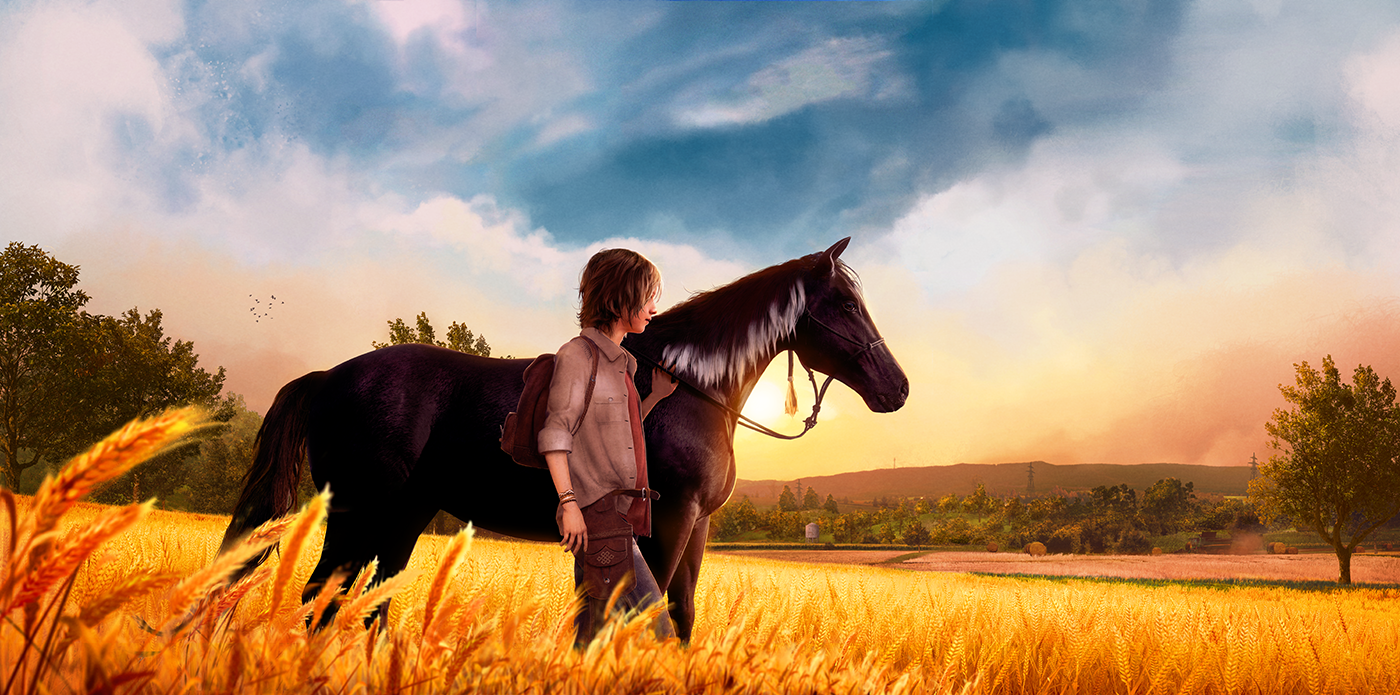




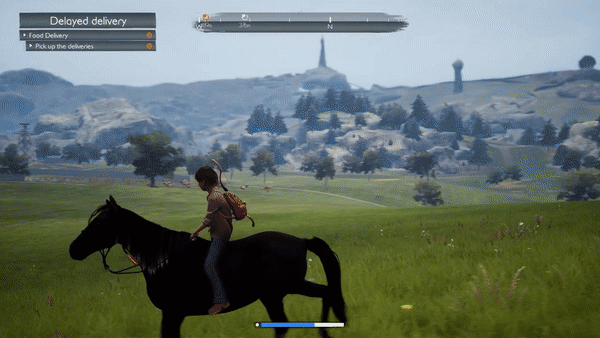



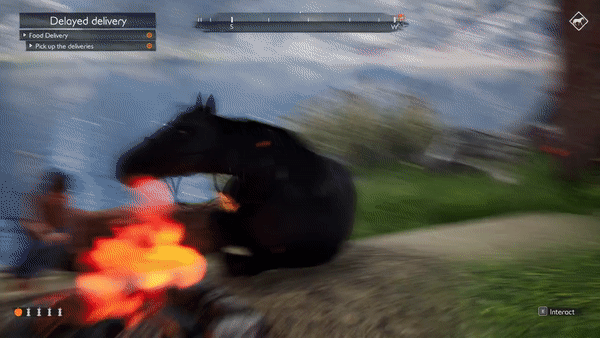
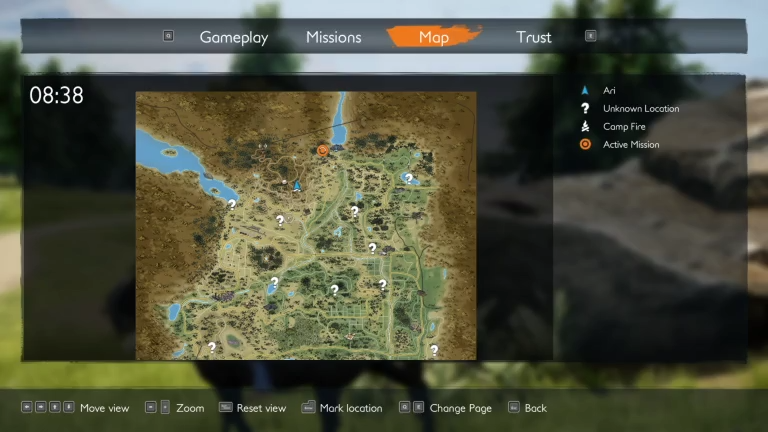
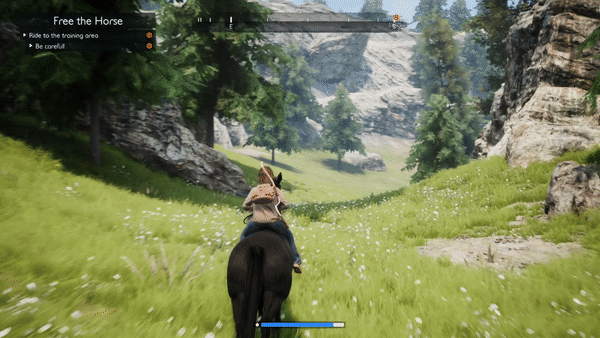
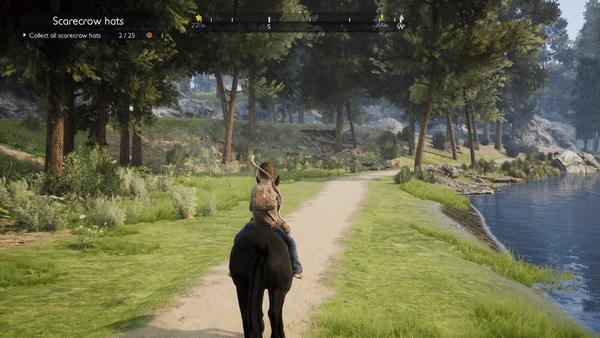
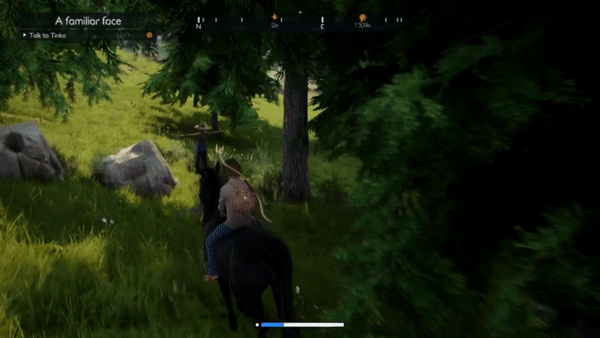





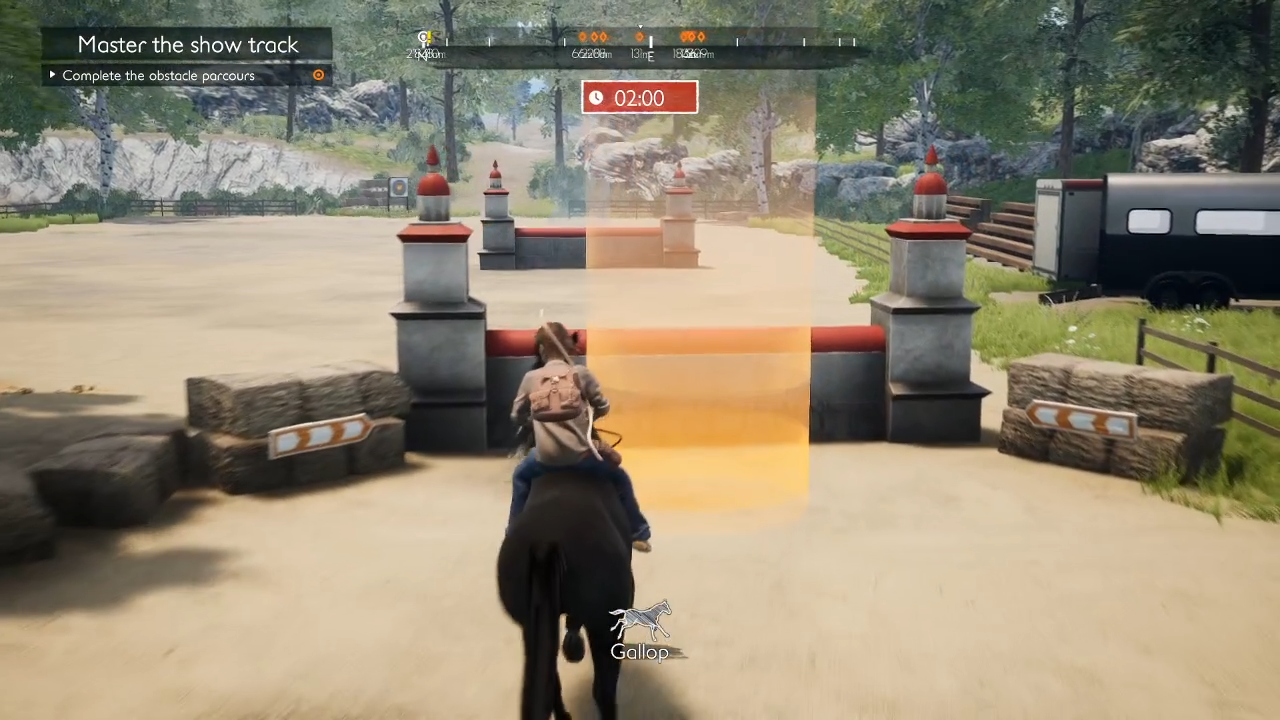


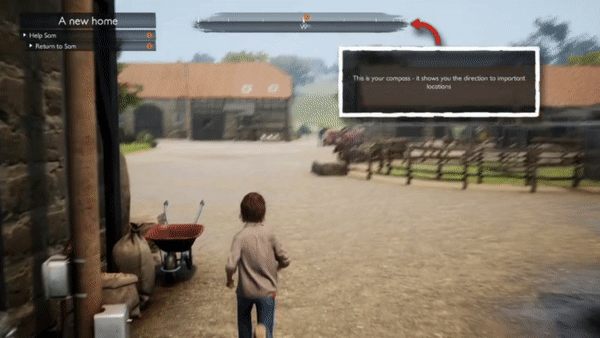
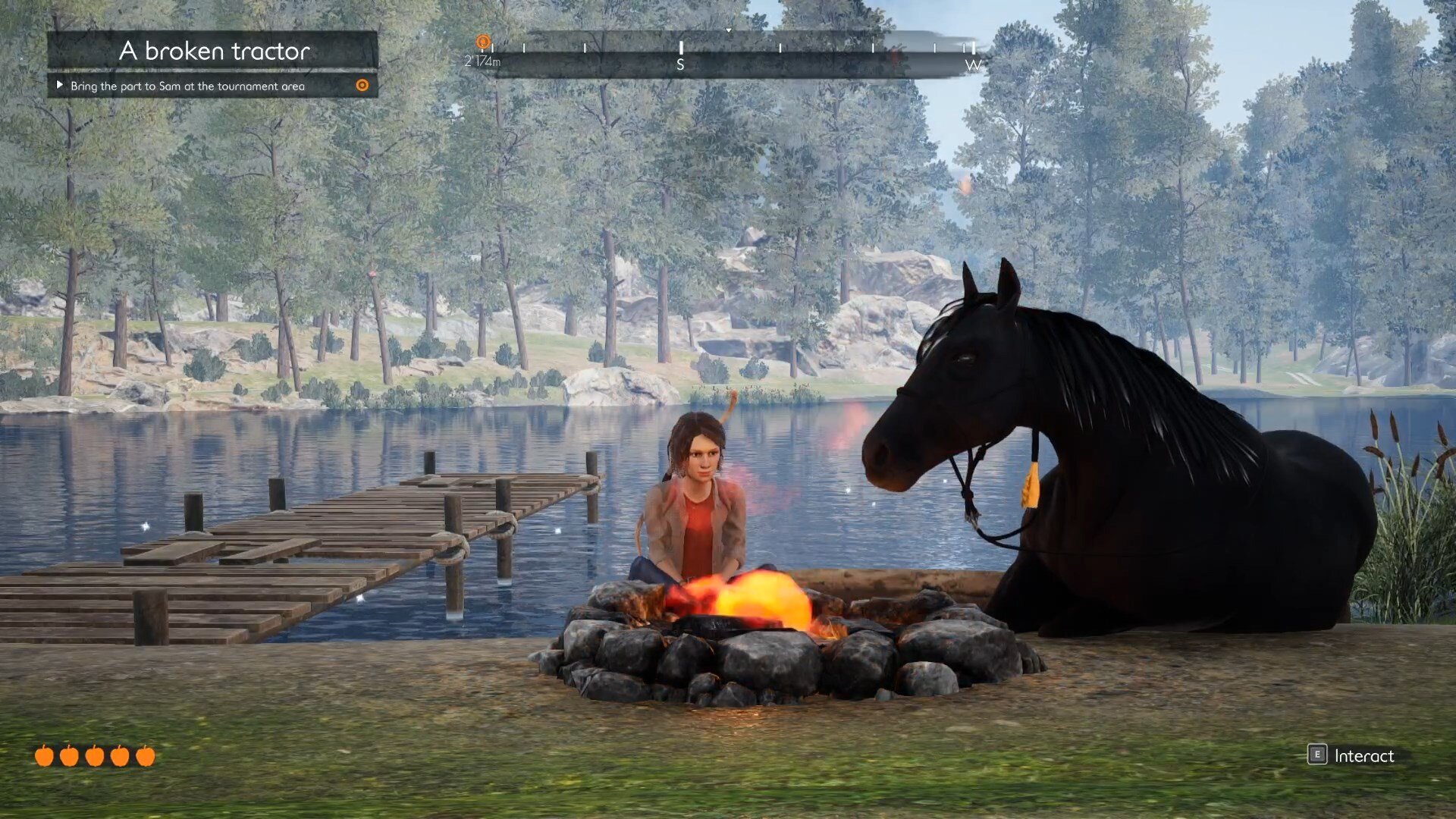


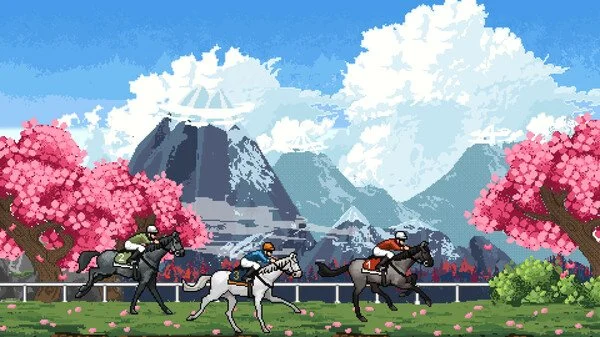
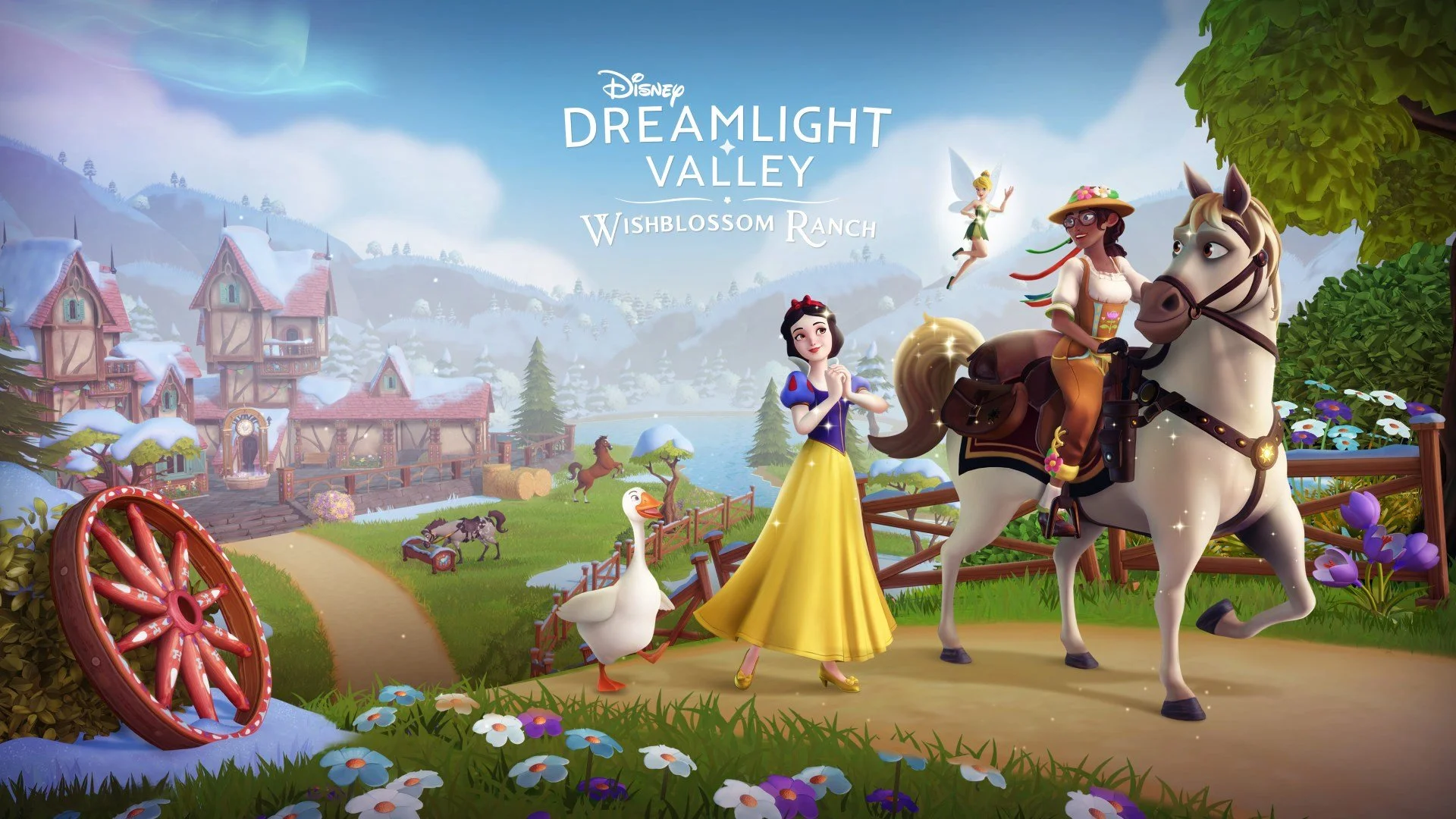


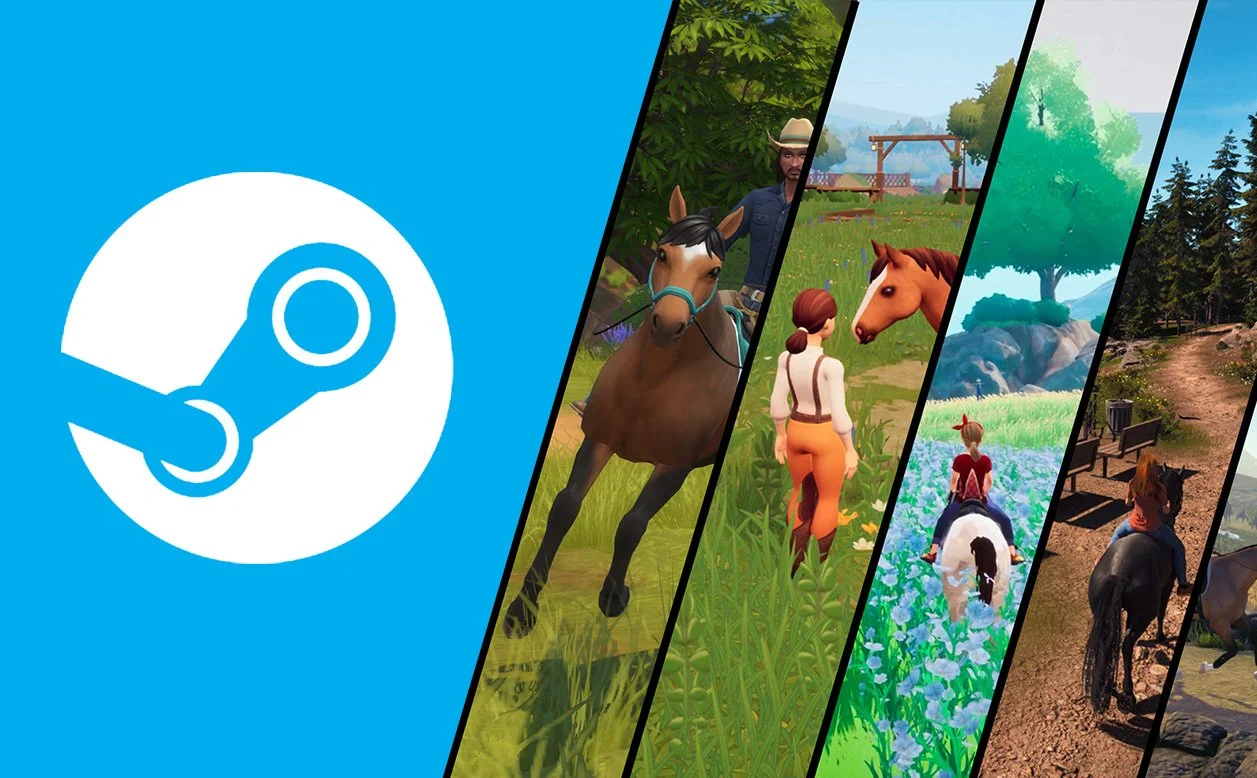
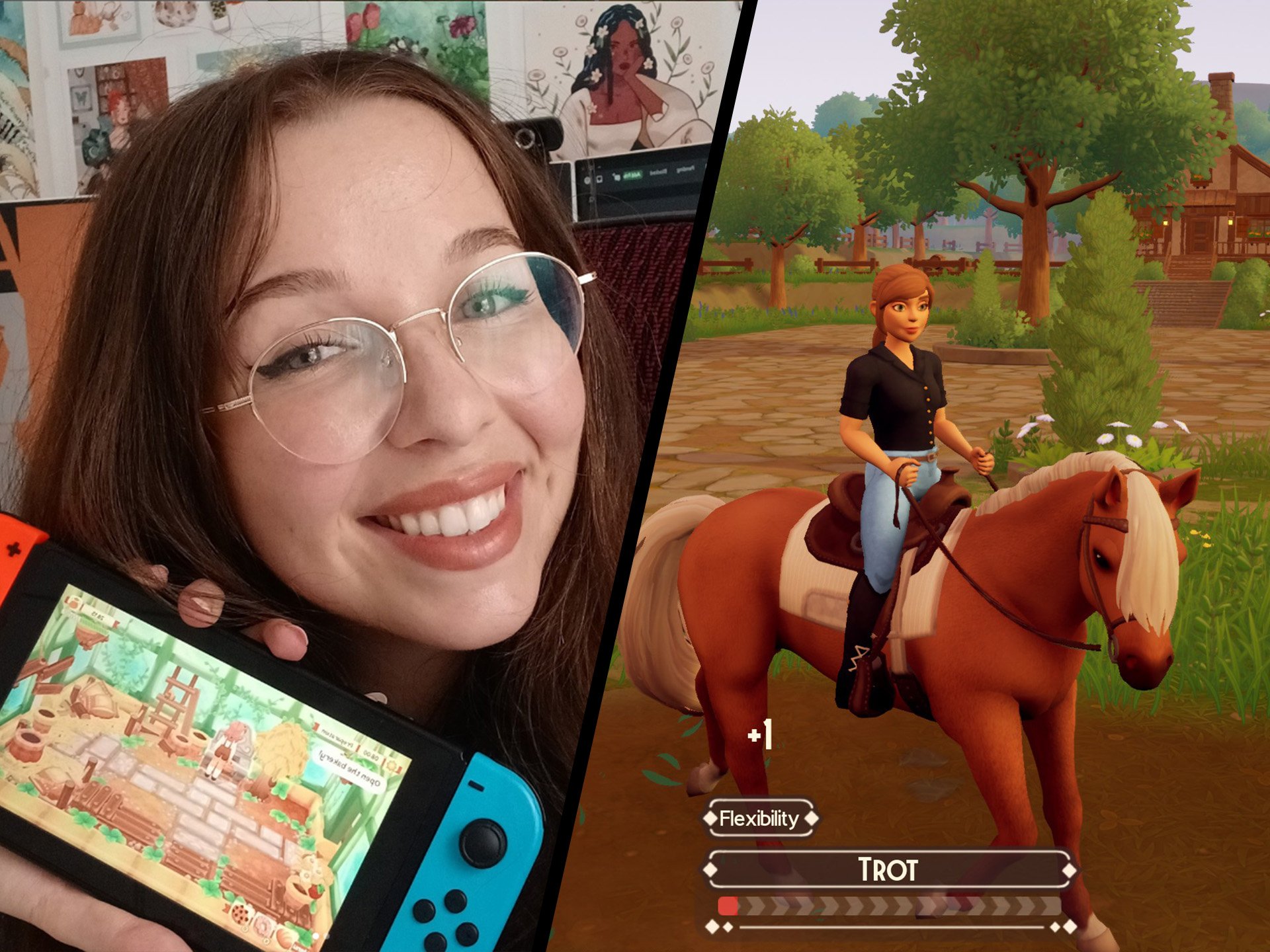
Ostwind is a franchise of horse themed books, movies and video games. At their center stand teenage girl Mika and the stallion Ostwind, who form a deep friendship and supernatural bond.
At a glance, Ostwind quickly looks like having the highest production value of any horse game ever made, with its highly detailed environments and promises of a big open world. Does that impression remain after a closer? Find out below.